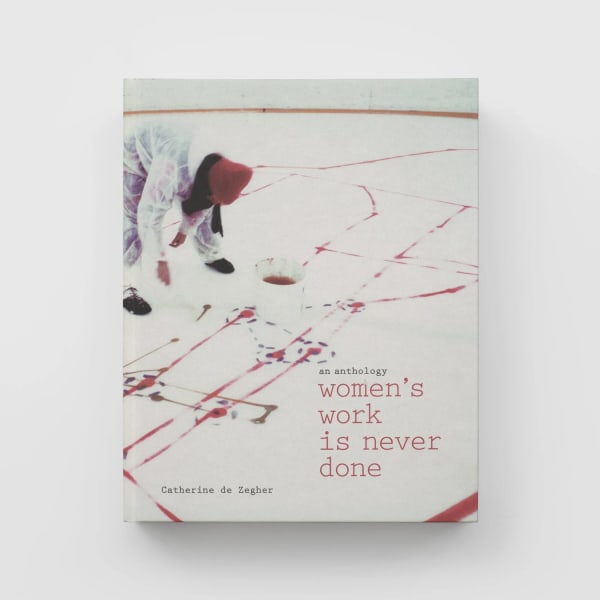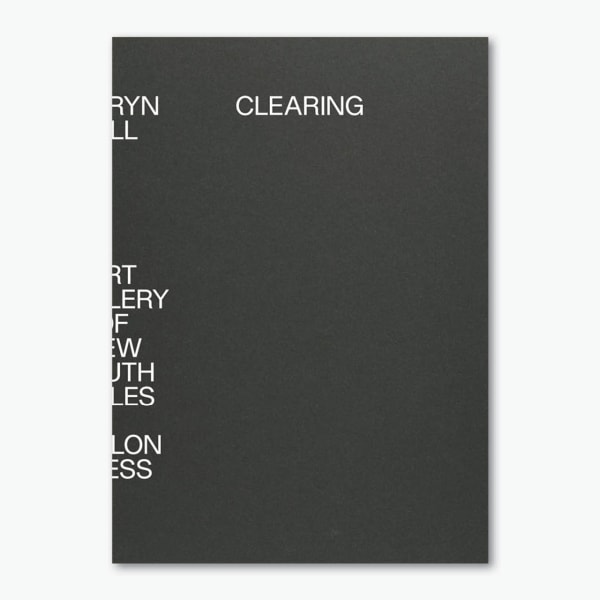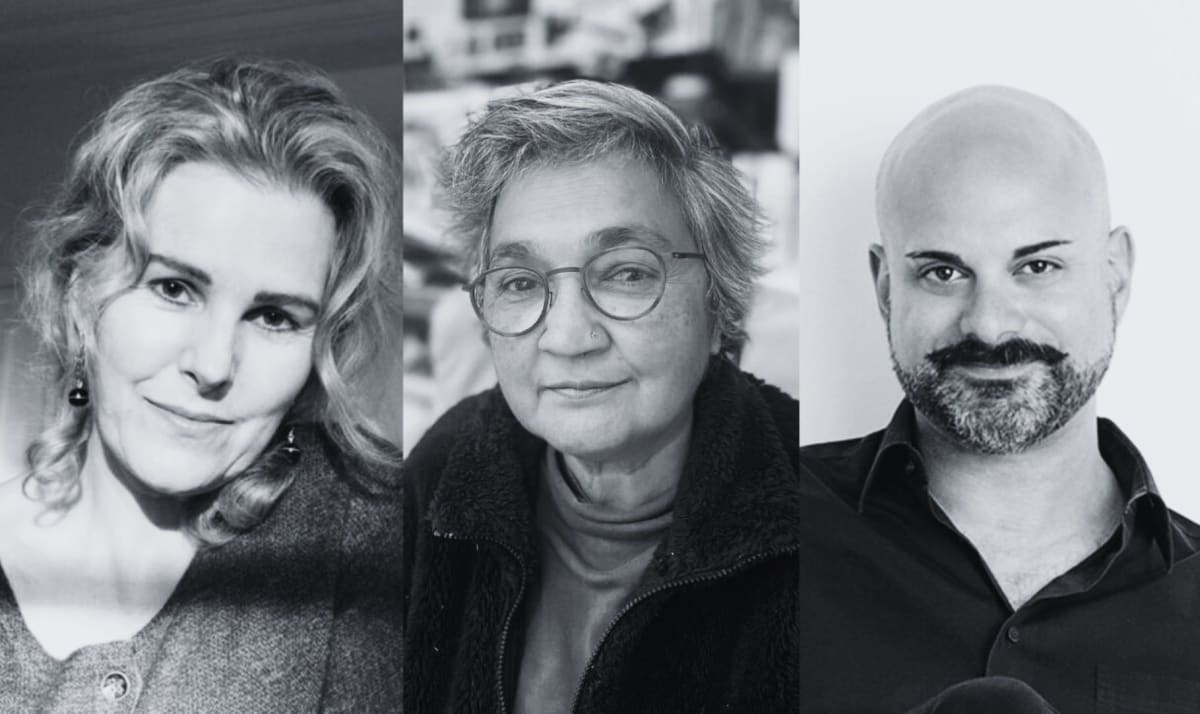Simryn Gill: Shelter: Curated by Catherine de Zegher
Opening: Friday, 20 September | 6-8pm
In-conversation with Simryn Gill, Catherine de zegher & Mark Rappolt: Saturday, 21 September | 2-4pm
Catherine de Zegher:
Simryn Gill
shell shelter sphere
From the silverfish lodging in a book with worm holes to the protective birdhouse in Vegetation (2016), from the egg-shapes in her collages to the photographic series with interiors of houses in Dalam (2001), Simryn Gill’s work has always been in some way involved with shelter. ‘We all need shelter,’ she says, as does the philosopher Peter Sloterdijk who suggests the basic existential question not to be ‘who we are’ but ‘where we are’. Where do people live, once it dawns on them that they occupy a globe, and that they have to make a home in the strange immensity of Gaia? To answer such questions, Sloterdijk develops his theory of spheres in the belief that a human is, above all, a ‘spheres builder’ who needs to shape the immensity of the world: ‘The one who is in the world, also finds oneself within a sphere.’ Concerned with the genesis of all life emerging from the original egg—ex ovo omnia—he considers the symbolic expansion of the egg’s shell into the sheltering domes of ancient buildings—from the intimate, matrixial sphere of coexistence between mother and child (or a pair of lovers) to myriad protective spaces and great metaphysical systems, from the microsphere of the uterus to the macrosphere of the nation-state conceived as a shielding space.
As we each have experienced, although few if any of us will be conscious of it afterwards, our birth provokes a shell rupture into the extra-matrixial sphere. However, it doesn’t mean that the outside world provides a shelless mode of being, without protective and nurturing shelter, since during the first years the proximity of the mother compensates in significant ways for the loss of the maternal matrix. How does the change of inner to outer sphere determine our life? How can the importance of this move into ‘social being’ be described? Through its primal oval form the egg can be seen to signify both fragility and maternal energy, nestling, life and shelter, as well as the liberation from that shell. But what does it mean to be in the world beyond the womb or shell, beyond the sense of embrace, absolute reciprocity, and encompassing warmth? As an enquiry of our ontological situation, Gill has made pictures of an outside that holds inner worlds, and of an inside that draws you out: Shelter with its frontal views of apparently idyllic rural houses in the outback—often overwhelmed by encroaching tropic vegetation, sometimes in vibrant colours, other times disquieting in the darkening light—and with its shaded interiors of kitchen tables or writing desks (2024). These photographs are of shell as well as shellessness, much like the small sculptural plaster casts of the interiors of fruits and gourds that have lost their exterior skin in her work Punch Drunk (2021).
Art history, as has been widely observed, has until recently been a chronicle of art made by great men against the background of wars, politics, economies, and so on… Yet, underpinning that chronicle is this other story made by women: it concerns the everyday that is most often dismissed as mundane, the life elided and overwritten by history. It is her story of pregnancy, of co-emerging, of birth giving, of feeding, caring, clothing, protecting, educating, of children, of family, of aging, of wrapping the dead, the whole life cycle, overlooked as merely the matter of the commonplace. In A History of Civilizations (1962), the social historian Fernand Braudel rejected the tradition of event-based narrative as the basis for a history course, arguing that it only attributed importance to the surviving historical sources from the literate wealthy classes, kings and popes, princes and prelates, from the powerful and victorious. Instead, he emphasized the crucial significance of the ephemeral lives of people at the margins of such histories, from the serfs to the peasants to the urban poor. With his focus on what he, together with others, came to describe as the longue durée, he argued that underneath there is another, foundational and still hidden story: the local story of the quotidian, the petty dealings of the everyday. In retrospect, the inescapable conclusion of this attention to the domestic brought to the fore a revolutionary consequence, that is, the recognition of women sustaining the world with their daily work, unacknowledged but undeniable, as the constant of human history.
Once this understanding had been opened, it could no longer be denied across society, and it is from this that Gill’s art emerges. Her work is about the lust for life—about the senses, not just about knowledge, but about feeling-knowing, both cognitive reason and sensibility. Undone from their shells, from their book covers, Gill patiently turns the pages of great literature into paper beads that are threaded into elegant necklaces, not as iconoclasm but as the shared stuff of the commonplace. This group of Pearls (2024) contains Problems of Life by Leon Trotsky, I Swear I Saw This by Michael Taussig, Stigmata by Helene Cixous, Regret by Janet Landman, and The Word for World is Forest by Ursula K. Le Guin. Gill’s work reaches beyond the dichotomy of the epic and the everyday, of nature and culture, and is embedded in the consciousness of transcending this fundamental separation. Hers is a world of shared being, of another understanding of the differences among the multitude of living creatures, human and non-human, to be seen in her remarkable imprints of trees, plants, flowers, birds and snakes, and here in Thistles and Friends (2024)—the friends being Lady of the Night, Morning Glory, and Castor Oil Plant—and Naga Doodles (2021). Augmented and layered by the work Mind’s Eye with the graphite rubbings of darkroom enlargers, these prints propose an alternative approach of the relation between nature and society. Armed with camera, enlarger, ink and paper, Gill’s is indeed a reflective practice: in tracing the matter of thistles, for example, considered as invasive plants in Australia and cursed by many, she asks pointedly, ‘how did they get there’? Of course, the seeds may probably have been in the wool of sheep imported from Scotland by settlers. In the end, we are responsible for what we do, and have done, to the land, to the planet.
And in relation of the thistle, let’s not forget what the origin of the motto of the historic Kingdom of Scotland is: Nemo me impune lacessit (Latin for 'No one harasses me with impunity' or 'No one can harm me without (detrimental) consequence'). According to the legend, the ‘guardian thistle’ (or Cirsium vulgare) played a vital part in the Scots’ defence of their kingdom against a night-time raiding party of Vikings from Norway in the mid-thirteenth century: one or more raiders let out a yell of pain when stepping on a prickly thistle, thus alerting the Scots. In the motto ‘No one harasses me with impunity’ ‘me’ is therefore originally the thistle itself. Today, Gill’s thistles leave us with the reflection that no one provokes the earth without impunity! As philosopher Bruno Latour writes: ‘It is only if we profit from Sloterdijk’s infectious concept of “enveloppes” and “spheres” that we might at last begin to prepare ourselves for living with and in Gaia instead of against and out of her.’
-
![Bolshe Sveta [More Light]](https://artlogic-res.cloudinary.com/w_600,c_limit,f_auto,fl_lossy,q_auto/ws-richardsaltoun2/usr/images/publications/main_image/135/moscow-biennale-book_1-2.jpg)
Bolshe Sveta [More Light]
5th Moscow Biennale 2013Softcover 383 pagesRead more
Publisher: MER. Paper Kunsthalle
ISBN: 9789491775307
Dimensions: 26 x 20 cm -

Women's Work is Never Done
Catherine de Zegher 2014Hardcover 608 pagesRead more
Publisher: MER. Paper Kunsthalle
ISBN: 9789490693473
Dimensions: 25 x 20 cm
Richard Saltoun Gallery presents the first solo exhibition by Sydney-based Malaysian artist Simryn GILL (b. 1959). The exhibition, across photography, works on paper and sculpture, features works from the last six years, and is curated by Catherine de Zegher, who also curated Gill’s presentation for the Australian Pavilion at the 2013 Venice Biennale. Shelter highlights the artist’s pivotal role in contemporary ecological discourse, as seen in her recent inclusions in the exhibition RE/SISTERS at the Barbican Centre, London and and FOMU, Antwerp (2023/24) and the duo exhibition The Sea is a Field at the Singapore Art Museum (2024), and in her published works, Becoming Palm (with Michael Taussig), Sternberg Press (2016), and Shallow (with Charles Lim), Stolon Press (2024) among others.
One of Australia’s leading artists, Gill’s practice looks at the experience of movement and migration through capturing fragments of everyday lives, and local microcosms, which are easily overlooked or dismissed as mundane. She describes herself as a "maker and keeper of records," emphasizing her commitment to (dis)order and ephemerality in her systems and categories of visual and material list-making. Through meticulous indexical, manual, and record-making processes, Gill creates unlikely renditions of objects and organic matter picked up from her immediate surroundings. She prints, glues, presses and tears these found materials in a characteristic mode of transformation that brings new meaning to these elements.
Exhibition highlights include Gill’s recently printed series of photographs entitled Shelter, taken of the exteriors and interiors of various houses in rural Australia and Malaysia. As de Zegher points out in her curatorial text, the artist’s work “has always been in some way involved with shelter. (...) As an enquiry of our ontological situation, Gill has made pictures of an outside that holds inner worlds, and of an inside that draws you out: Shelter with its frontal views of apparently idyllic rural houses in the outback—often overwhelmed by encroaching tropic vegetation, sometimes in vibrant colours, other times disquieting in the darkening light—and with its shaded interiors of kitchen tables or writing desks.”
Additional highlights include Gill’s distinctive ink rubbings on paper; the series Thistles and Friends (2024) and Naga Doodles (2017). As de Zegher poignantly writes, these works propose an “alternative approach of the relation between nature and society. Armed with camera, enlarger, ink and paper, Gill’s is indeed a reflective practice: in tracing the matter of thistles, considered as invasive plants in Australia and cursed by many, she asks pointedly, ‘how did they get here’? Of course, the seeds may probably have been in the wool of sheep imported from Scotland by settlers. In the end, we are responsible for what we do, and have done, to the land, to the planet.”
In Naga Doodles, Gill transfers the intricacies of snakeskin patterns onto paper from roadkill snakes collected in the vicinity of her home in Malaysia. She inks and flattens the carcasses, covering them with paper to capture their detailed impressions before burying the snakes in her garden. The series title draws from Sanskrit and Malay references to revered serpent deities in Hindu and Buddhist traditions. These serpentine forms and textures challenge traditional perceptions of drawing and printmaking, emphasizing spontaneity and the primal sense of touch over visual precision.
The exhibition also features new pieces from Gill’s ongoing necklace works entitled Pearls (1999 -). These delicate garlands of beads are composed from pages of books and explore the significance of the quotidian to the shaping of human history, and the entanglement of humans and non-humans. “Undone from their shells, from their book covers, Gill patiently turns the pages of great literature into paper beads that are threaded into elegant necklaces, not as iconoclasm but as the shared stuff of the commonplace. This group contains Problems of Life by Leon Trotsky, I Swear I Saw This by Michael Taussig, Stigmata by Helene Cixous, Regret by Janet Landman, and The Word for World is Forest by Ursula K. Le Guin”, writes de Zegher.






















